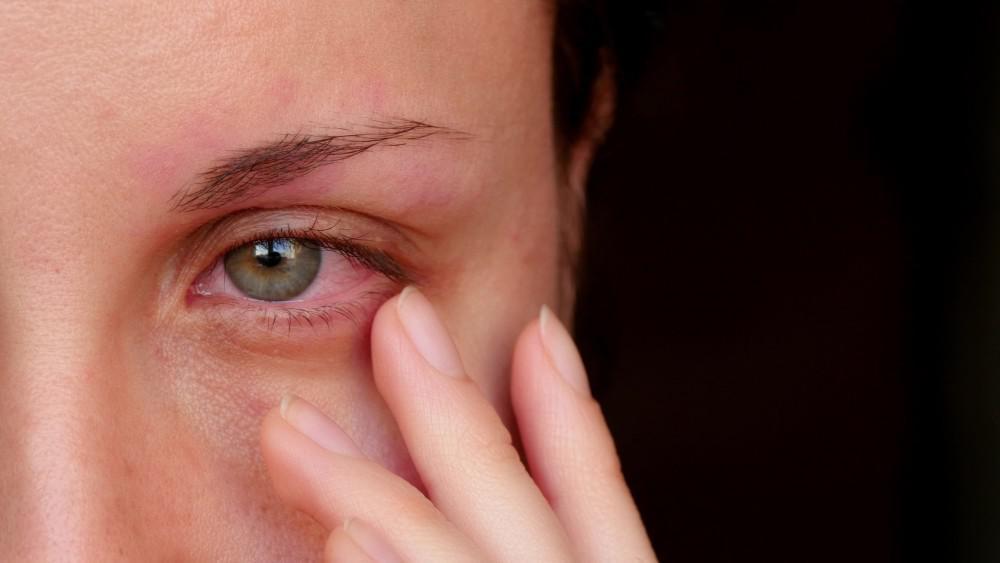Dry Eye: Understanding the Condition
Dry eye is a multifaceted condition characterized by a disruption in tear production, impacting ocular health. Tears, a complex blend of water, protein, fat, mucus, and immune cells, play a crucial role in maintaining eye lubrication and clarity. These tears are generated by the lacrimal glands situated within the eyelids, beneath the upper eyelid, and the mucous membranes covering the whites of the eyes. The intricate composition of tears contributes to their ability to nourish and protect the eyes, fostering overall ocular well-being.
Understanding the vital Functions of Tears:
Tears serve several crucial functions to ensure the health and well-being of our eyes:
- Moisturizing the Eyes: Keeping the eyes hydrated and free from dust.
- Protecting Against Infection: Acting as a protective barrier to prevent infections.
- Stabilizing Vision: Contributing to the stability of vision.

Diverse Symptoms of Dry Eye:
Dry eye symptoms can vary among individuals, with some common signs:
- Watery Eyes (especially in windy conditions): Tears fail to adhere to the eye’s surface, leading to excessive tearing in response to environmental factors like wind.
- Sensation of Dryness, Burning, or Pain: A persistent feeling of dryness or discomfort in one or both eyes, often intensifying throughout the day due to insufficient moisture.
- Redness of the Eyes: Inflammation resulting from inadequate tear production.
- Blurred Vision (especially during activities like reading or using screens): Reduced blinking during such tasks can cause a buildup of substances in tears, temporarily blurring vision.
- Eyelid Stickiness: Occurring in the morning due to insufficient moisture, causing the eyelids to stick together or to the eye’s surface.
Exploring the Causes of Dry Eyes:
Dry eye syndrome is frequently linked to the natural aging process. However, several factors can contribute to or exacerbate this condition:
- Eyelid Problems, Including Blepharitis: Blepharitis, a common and typically mild chronic inflammation of the eyelid edges, can lead to dry eyes. Proper management is crucial, and doctors provide necessary guidance.
- Medication Side Effects: Certain medications may have dry eyes as a side effect. It’s essential to be aware of potential impacts and consult with a healthcare professional if needed.
- Diseases such as Rheumatism: Some systemic conditions, like rheumatism, can be associated with dry eyes, emphasizing the interconnectedness of overall health and eye well-being.
- Environmental Factors: Various environmental conditions can worsen dry eyes, including hot, dry, or windy weather, living at higher altitudes, exposure to air conditioning, central heating systems, and cigarette smoke.
It’s crucial to recognize that dry eyes often result from a combination of these factors, and in some cases, the exact cause remains unknown. Comprehensive evaluation and individualized management are key components of addressing dry eye concerns.
Diverse Symptoms of Dry Eye:
Dry eye symptoms can vary among individuals, with some common signs:
- Watery Eyes (especially in windy conditions): Tears fail to adhere to the eye’s surface, leading to excessive tearing in response to environmental factors like wind.
- Sensation of Dryness, Burning, or Pain: A persistent feeling of dryness or discomfort in one or both eyes, often intensifying throughout the day due to insufficient moisture.
- Redness of the Eyes: Inflammation resulting from inadequate tear production.
- Blurred Vision (especially during activities like reading or using screens): Reduced blinking during such tasks can cause a buildup of substances in tears, temporarily blurring vision.
- Eyelid Stickiness: Occurring in the morning due to insufficient moisture, causing the eyelids to stick together or to the eye’s surface.
Exploring the Causes of Dry Eyes:
Dry eye syndrome is frequently linked to the natural aging process. However, several factors can contribute to or exacerbate this condition:
- Eyelid Problems, Including Blepharitis: Blepharitis, a common and typically mild chronic inflammation of the eyelid edges, can lead to dry eyes. Proper management is crucial, and doctors provide necessary guidance.
- Medication Side Effects: Certain medications may have dry eyes as a side effect. It’s essential to be aware of potential impacts and consult with a healthcare professional if needed.
- Diseases such as Rheumatism: Some systemic conditions, like rheumatism, can be associated with dry eyes, emphasizing the interconnectedness of overall health and eye well-being.
- Environmental Factors: Various environmental conditions can worsen dry eyes, including hot, dry, or windy weather, living at higher altitudes, exposure to air conditioning, central heating systems, and cigarette smoke.
It’s crucial to recognize that dry eyes often result from a combination of these factors, and in some cases, the exact cause remains unknown. Comprehensive evaluation and individualized management are key components of addressing dry eye concerns.
Managing Dry Eye:
- Identify and Address Underlying Causes: Examine potential disease-related factors, such as medications or environmental triggers, and take steps to mitigate them.
- Introduce Humidification: Install a humidifier in your home or workplace to alleviate dry eye symptoms by maintaining optimal moisture levels.
- Modify Work Practices: Consider adjustments to your work routine. If your occupation entails prolonged computer use, incorporating hourly eye rest breaks may contribute to symptom reduction.
Implementing these measures can significantly enhance your overall eye comfort and address the underlying factors contributing to dry eyes. Consulting with a healthcare professional ensures tailored guidance for effective symptom management.
Reducing Dry Eye:
- Address Underlying Diseases: Identify and treat any underlying diseases contributing to dry eye syndrome, as effective management of the root cause is essential.
- Medications by Artificial Tears: Commonly recommended, these over-the-counter eye drops offer relief by supplementing natural tear production. Various brands and formulations are available, and some individuals may benefit from preservative-free options. It’s advisable to follow your doctor’s guidance for optimal usage.
Incorporating these treatments, based on professional advice, can alleviate dry eye symptoms and enhance overall eye health. Regular follow-ups with a healthcare provider ensure tailored and effective management strategies.
Medications for Dry Eye:
Artificial Tears are a widely used remedy for dry eyes, artificial tears provide relief by supplementing the eye’s natural tear production. In addition, various formulations are available, and certain types can be acquired without a prescription. It’s essential to follow recommended usage instructions and consult with a healthcare professional for personalized advice on selecting the most suitable artificial tears for your condition.
Regular use of artificial tears, as directed by your healthcare provider, can contribute to managing and alleviating dry eye symptoms effectively.
Important Considerations:
While these treatments cannot offer a permanent cure for dry eyes, consistent use of prescribed medications at regular intervals is essential. Although ongoing, these treatments prove highly effective in significantly alleviating symptoms, potentially requiring lifelong continuation for optimal management.


